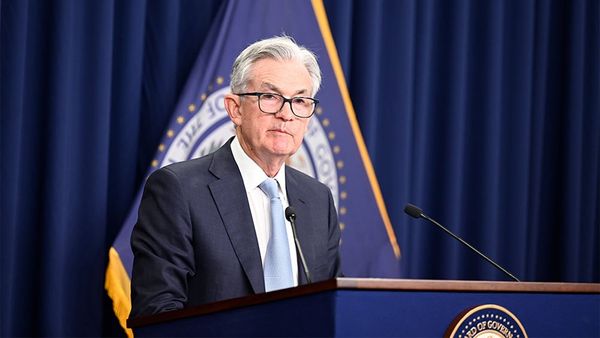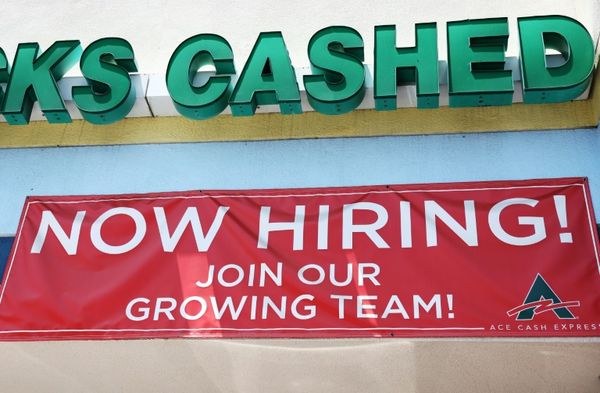The January jobs report revealed unexpectedly strong hiring, as employers added 353,000 payroll positions. After the jobs report, which dents the chances for a near-term Federal Reserve rate cut, the S&P 500 shook off initial concerns and rose solidly, driven by strong tech earnings.
Still, there are a few reasons to think that strong hiring and wage gains may be overstated, at least partly due to seasonal adjustment issues.
Jobs Report Hits And Misses
The 353,000 overall employment gain topped Wall Street's 170,000 forecast, according to Econoday. The 317,000 private-sector payroll rise blew away estimates for a 142,000 gain. Meanwhile, government payrolls rose by 36,000.
Hiring gains in November and December were revised up by a combined 126,000 jobs.
Here's the biggest shock: The average monthly gain in private payrolls over the prior three months went from a sluggish 115,000 in the initial December data reported in early January to a robust 249,000.
Meanwhile, the average hourly wage surged 0.6%, doubling estimates. The average hourly wage is up 4.5% from a year ago vs. estimates of 4.1%.
There was one notable sign of softness however. The average workweek shrank to 34.1 hours from 34.3 in December and 34.4 in November. The upshot is that even with the surge in hiring, the aggregate number of hours worked across the economy actually slipped 0.3% on the month.
Misleading Data?
Keep in mind that the Labor Department data shows that employers slashed payrolls by 2.635 million during the month, unadjusted for seasonal factors. That largely reflects the reversal of hiring for the holiday season.
To the extent employers hired less in the fourth quarter, they may have needed to cut fewer positions in January.
The seasonally adjusted gain of 45,200 retail jobs and 15,500 transportation and warehousing jobs in January stand out, because retailers cut 42,900 jobs in November while transportation and warehousing shed 10,500 jobs that month.
Covid could be another factor distorting seasonal adjustment. That's because big Covid spikes in January 2021 and January 2022, when Omnicron variant was rampant, may have negatively effected hiring to start the year.
For January 2023, the Labor Department initially estimated a 443,000 gain in private-sector jobs, but that has since been revised down to 359,000.
The combination of surging payrolls and sinking hours worked also looks odd, though weather could be at least a partial explanation. RSM chief economist Joseph Brusuelas noted that bad weather kept 588,000 people from working.
The drop in hours worked also may have distorted the average hourly wage, because especially big drops came in modest-pay retail and leisure and hospitality sectors.
Household Survey
The headline job and wage figures come from the Labor Department's monthly survey of employers. The separate household survey details labor force participation, work status and the unemployment rate.
The unemployment rate held at 3.7% vs. forecasts of 3.8%. But on an unrounded basis, the unemployment rate eased to 3.66% from 3.74%. The ranks of the employed as a percentage of the population rose to 60.2% from 60.1% in January.
The January jobs data comes with new population estimates. The estimated working-age population fell by 451,000 from December to January.
Fed Rate Hike Odds
After the January jobs report, markets were pricing in 20.5% odds of a March 20 rate hike, down from 34.5% ahead of the data, according to CME Group's FedWatch page. Odds of a hike by the May 1 meeting fell to 72.5% from 94% pre-jobs report.
For all of 2024, odds of at least 1.5 percentage points of rate cuts fell to 34% from 61%.
S&P 500, 10-Year Treasury Yield
The S&P 500 rose 0.6%, in early Friday stock market action, after initially losing ground on the jobs data. On Thursday, the S&P 500 climbed 1.25% to finish just 0.4% below its all-time closing high.
The 10-year Treasury yield, after this week's dive from 4.16% to 3.86% through Thursday, jumped back to 4.04%.
Be sure to read IBD's The Big Picture column after each trading day to get the latest on the prevailing stock market trend and what it means for your trading decisions.










